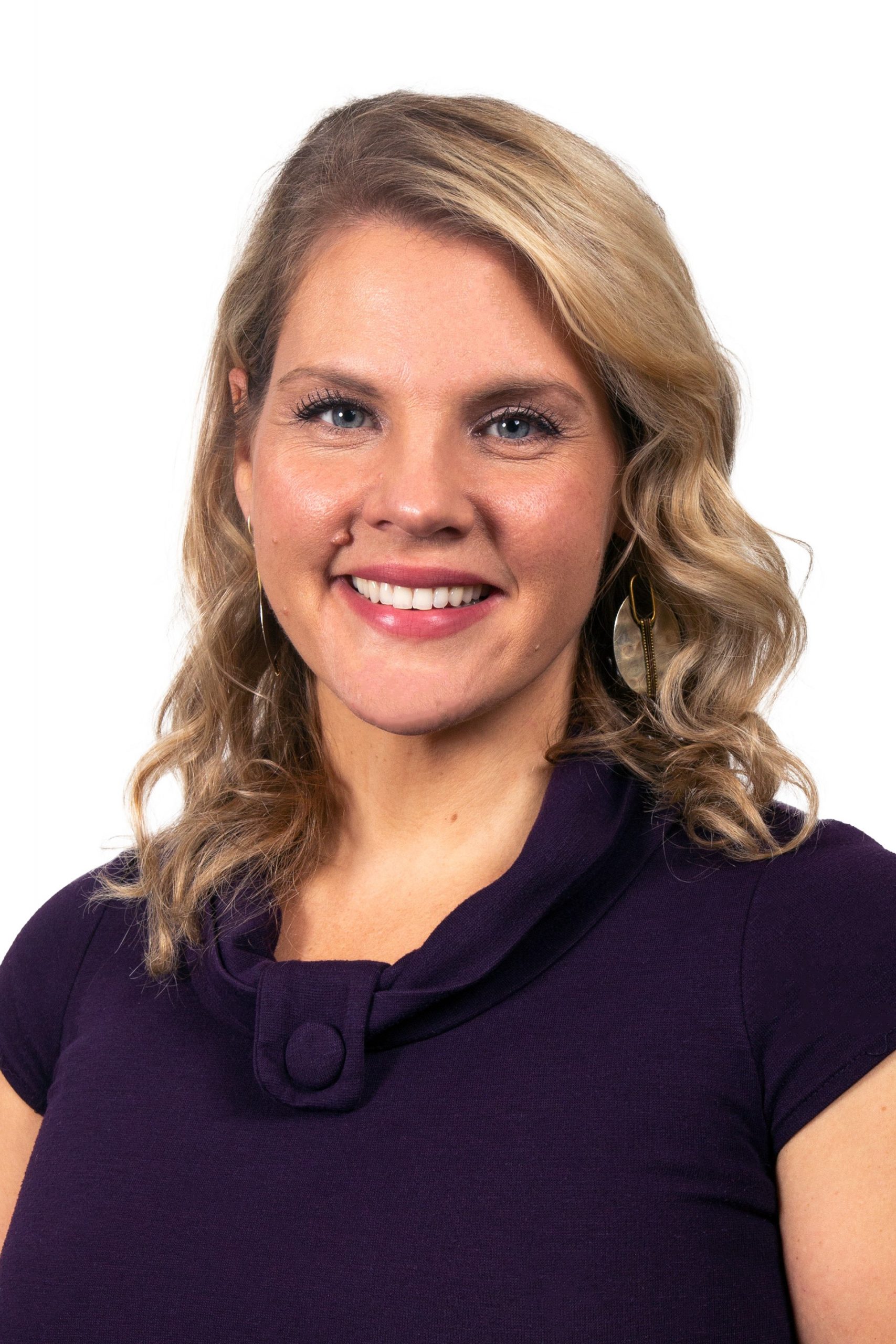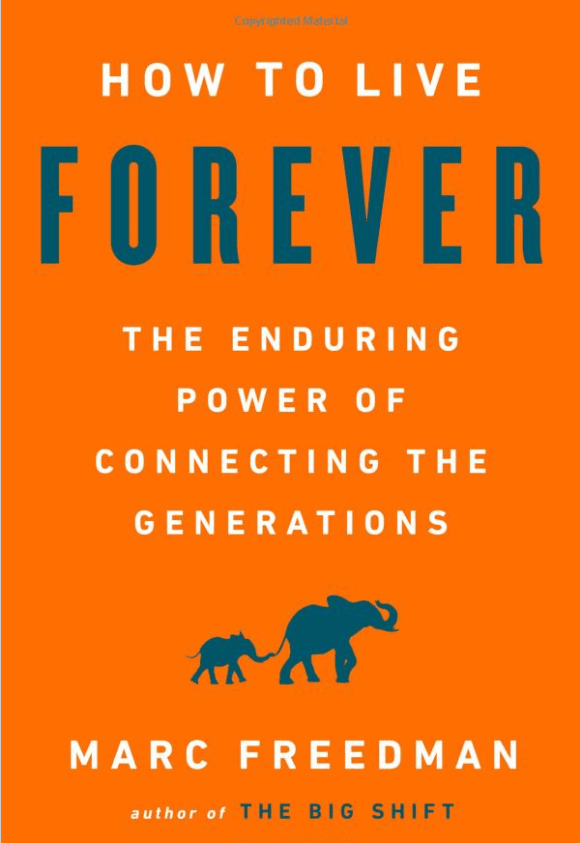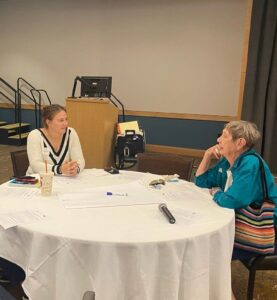Intergenerational Book Discussion on Marc Freedman's "How to Live Forever"
Intergenerational Book Discussion on Marc Freedman’s “How to Live Forever”
August 31, 2022

“Lindsey Beagley is the Director of the ASU Engagement Office at Mirabella at ASU. The ASU Engagement Office is a dedicated on-site resource for residents to navigate and take advantage of learning and engagement opportunities on campus. In addition to coordinating campus tours and lectures exclusively for Mirabella at ASU residents, the ASU Engagement office designs innovative intergenerational programming to connect residents to ASU students”
One of the seminal works that guided my thinking about Mirabella at ASU’s potential as a force for promoting and socializing intergenerational connections, was Marc Freedman’s How to Live Forever: The Enduring Power of Connecting the Generations (2018). I knew early on that Mirabella would require thoughtful program designs to promote connections between generations that don’t typically interact – particularly on a college campus. This book, and Freedman’s 30+ years of thought leadership on the critical importance and value of stitching together generations in meaningful, mutually beneficial ways, helped me articulate some of the how and, most importantly, the why. I jumped at the chance to re-read this book with Mirabella residents, ASU students and staff as we examined these ideas through the lenses of our distinct generations and life stages.
I had the pleasure and good fortune of securing Dr. Duane Roen as our facilitator. Dr. Roen, now retired from a celebrated career at ASU as Vice Provost and Dean of the College of Integrative Sciences and Arts, has long offered his expertise to the community by leading writing workshops with an emphasis on family history writing. He previously used excerpts of this book to guide a legacy writing workshop at Mirabella to encourage residents to reflect on how our lives will connect with future generations. By all accounts, Dr. Roen was the perfect guide for our conversation.
He posed a variety of questions for discussion in our small groups composed of all ages: What do we gain when we invest in younger and older generations? What do you want to survive you?

Residents shared that they placed more importance on passing along their values to their children over everything they’ve worked for in life. For those who didn’t have children, they expressed an urgent desire to support the next generation in securing opportunities in which to thrive. Indeed, most residents move to Mirabella not only for the opportunity to continue learning, but to make use of their life experiences by helping future learners and leaders succeed. In many ways, Mirabella at ASU is an important response to Freedman’s call to action and social imperative: “We must age-integrate everything.” University-based retirement communities allow us to deeply explore how to age-integrate learning and social action – two attributes college campuses are particularly known for.
Dr. Roen also focused on Freedman’s reference to American novelist John Gardner’s view that “America today faces breathtaking opportunities disguised as insoluble problems” (p. 80). He noted that current ASU President Michael Crow shares this view and has designed ASU as a prototype for a new kind of 21st-century public research institution; one organized in such a way to be capable and responsible for tackling some of society’s thorniest challenges.
We left with assigned homework directing us to list ways in which to help others, both young and old, be more resilient. I am overwhelmed at the opportunities to do this at ASU, a place that is committed to measuring itself “not by whom it excludes, but by whom it includes and how they succeed; advancing research and discovery of public value; and assuming fundamental responsibility for the economic, social, cultural and overall health of the communities it serves.”


